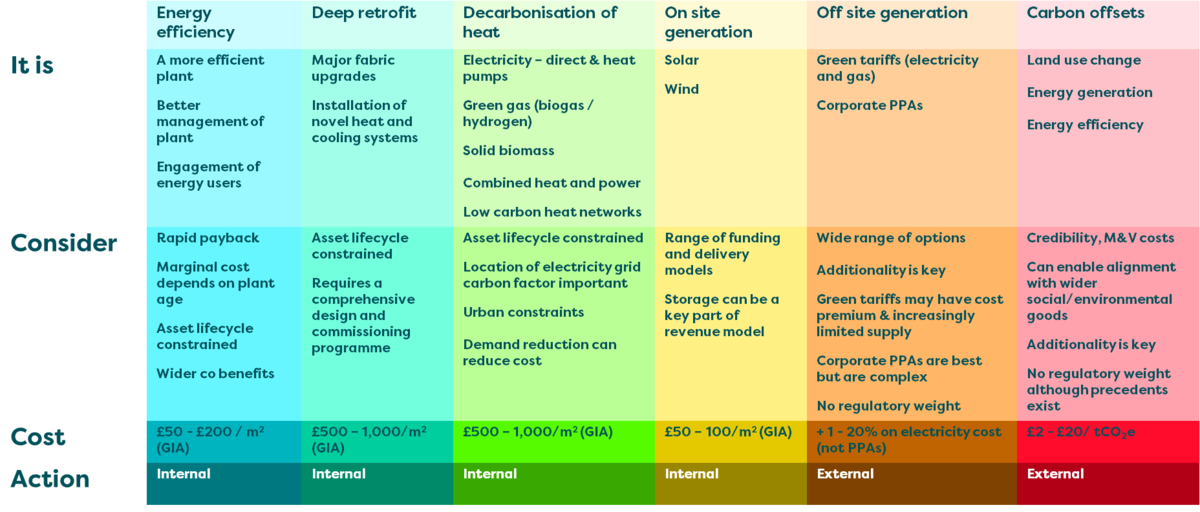Pathways to net zero carbon operational energy for buildings
The UK GBC definition of net zero for building operational energy is:
“When the amount of carbon emissions associated with the building’s operational energy on an annual basis is zero or negative. A net zero carbon building is highly energy efficient and powered from on-site and/or off-site renewable energy sources, with any remaining carbon balance offset.”
But defining a suitable pathway to achieve net zero is still messy.
There are a range of methods under development such as the Sectoral Decarbonisation approach which provides a coarse global sector-wide target. Or the Dutch Green Building Council: which distributes available renewable energy in 2050 and assigns energy intensities by activity. But there are material discrepancies between approaches in terms of target year and unit conventions.
The SBTI differentiates between three levels of ambition.
Below 2 Degrees- Requires a 2.7% reduction per annum and uses the SDA method which is measured on an intensity basis and involves more ambitious near-term decarbonisation.
Well below 2 Degrees
1.5 Degrees- Requires a 4.9% reduction per annum. In this scenario, ‘net zero’ is achieved well before 2050.
The UKGBC itself has proposed a framework to zero carbon, which they expect to develop further and to tighten standards over time https://www.ukgbc.org/wp-content/uploads/2019/04/Net-Zero-Carbon-Buildings-A-framework-definition.pdf.
Six aspects of a decarbonisation pathway.
Decarbonisation pathways can be considered to have six aspects which range widely in costs, as shown in the figure

People make it happen
It’s important to recognise that people and culture change are key to the pathway being a success.
Responsibility, skills and power:
It must be clear who has responsibility for what. Those responsible need to have the skills and power to act.
Transparency and accountability:
There must be annual measurement, rating and disclosure of the energy performance and comparison with targets.
Buy-in creates a virtuous circle:
The endeavour will thrive if all parties accept improved energy efficiency produces business benefits for all stakeholders.